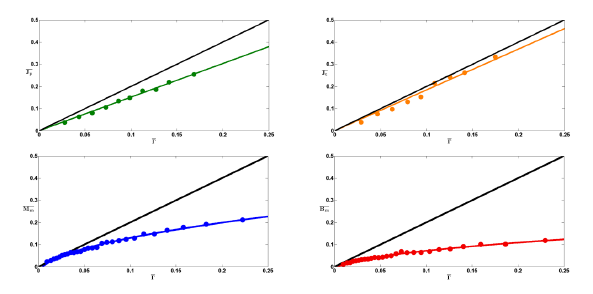Theme
Where and how should integration policy-makers focus their resources and attention?
Summary
Integrating immigrants is politically challenging. This analysis shows in a novel way the increased complexity of immigrant integration as immigration becomes a more numerous phenomenon. The idea is to help pinpoint where and how integration policy-makers need to focus their resources and attention.
Analysis
Introduction
Both the OECD and the EU have declared that immigrant integration plays a key role in promoting future economic growth, social cohesion and well-being in EU member states and other developed countries. At the same time, we witness frequent mass media coverage of integration-related problems and a global surge in outspoken anti-immigration political parties. This mismatch between immigrant integration objectives and the reality in which the phenomenon is unfolding is problematic and calls for well thought out and efficient policy measures. However, despite the enduring nature of integration problems and the pressing need for efficient policy measures, paramount questions regarding the integration process remain unanswered. How integrated are a country’s immigrants? How does the integration process respond to a rise in immigration? Which mechanisms drive the integration process? Attending to questions like these may surface important information about how to cope with immigration and integration challenges more effectively in the future.
How integrated are immigrants?
Recently we have illustrated that using register data with a minimum of variables we can extract precise quantitative answers to these types of questions as well as define full integration (Contucci & Sandell, 2015). To do this we looked at two different integration contexts –labour market integration and social integration– using data from Spain.

Figure 1 shows the result of our analysis: we compare our measure of observed immigrant integration with our definition of full immigrant integration. The measures of integration in the labour market are obtained using information about the local rates of temporary and indefinite labour contracts given to immigrants in Spain. The data for 2005-10 are drawn from across municipalities with populations of over 40,000. Similarly, social integration measures are obtained using information about the local rates of inter-marriage and the rates of new-borns with one native and one immigrant parent in Spain. The data for 1999-2008 are drawn from across municipalities with populations of over 10,000. Our analysis, simply put, consists in looking at the relationship, or functional dependency, between the (local) magnitudes of integration in the two integration contexts and (local) levels of immigration for as many instances and places for which there are available data and comparing the resulting average measure of observed integration with our measure of full integration. Full integration is simply when immigrants and natives are indistinguishable. That is, when the fact that some people are immigrants does not affect the likelihood of an immigrant getting, say, a job or marrying a native and vice versa (see Barra et al., 2014, and Contucci & Sandell, 2015, for further information regarding data sources, definitions and methodology.)
The available data reveals a complicated social reality and illustrates in a very explicit way some difficulties ahead for societies that, for instance, progressively need to rely on labour migration to sustain current levels of welfare and economic growth. We can see that while the labour market integration process (the upper panel in Figure 1) approaches full integration regardless of the rate of immigrants, its social counterpart (the lower panel in Figure 1) dramatically lags behind as the size of the immigrant population increases. Spain, which is our case country, has close to full labour-market integration regardless of the number of immigrants in the system, whereas social integration quickly decreases and stagnates well below full integration as immigration rises. The gap between labour market and social integration therefore quickly increases with an increased rate of immigrants in a location. Thus, having to rely on immigration and the successful integration of immigrants to secure the ‘economic’ future seems unrealistic if the growing social integration deficit is not addressed when and if immigration levels rise.
Why social and economic integration differ
This simple analysis, moreover, identifies an important source for the observed differences between the two integration processes. A linear increase of the indicator over immigrant density of the type we observe for labour-market integration, suggests that employer-employee decisions about whether to engage in a mixed native-immigrant labour contract are made independently of how other employer-employee decisions were made. In other words, social network effects are unimportant in this integration context. This is not the case for social integration. The observed non-linear growth of social indicators over immigrant density is due to the fact that individual choices are inter-dependent. That is, choices affecting inter-partnership decisions are mostly delegated to social networks through an interaction mechanism. These differences demand different policy responses. For example, when integration grows linearly with immigrant density, as our labour participation indicators, effective policy responses should focus on problems such as access to labour markets, to improve integration, whereas integration induced by social action and interaction requires policies targeting the quality and intensity of interaction between immigrants and locals.
Conclusions
In other words, when faced with increasing immigration, the springboard for high overall integration is the social integration process. In this case, the social integration process takes place among strongly correlated agents. This means that to achieve high overall integration in this system the interaction mechanism that generates segregating forces has to be identified and neutralised by means of policies. If left unattended these discrepancies may undermine the immigration strategy adopted by many governments and international organisations.
The question is how? Our quantitative analysis describes the average behaviour of the integration process across numerous localities in the system under study. Therefore, having established the characteristics and performance of a particular integration process in a society or region we can easily extract information about fluctuations around the mean values with a view to identifying best practices (localities that over-perform) in the system. Furthermore, international comparisons and the benchmarking of integration efforts are lagging behind because of the lack of efficient comparative measures of the integration phenomena. Provided that suitable (statistically robust) data are available, regional and international comparisons are easily accomplished using this analytical framework. Needless to say, international and interregional comparisons would help in providing important clues on how to promote social integration processes as immigration levels rise.
Pierluigi Contucci
University of Bologna, Italy | @Contucci
Rickard Sandell
Universidad Carlos III de Madrid, Spain
References
Barra, A., P. Contucci, R. Sandell & C. Vernia (2014), ‘An analysis of a large dataset on immigrant integration in Spain. The statistical mechanics perspective on Social Action’, Scientific Reports, nr 4, p. 4174.
Contucci, P., & R. Sandell (2015), ‘How integrated are immigrants?’, Demographic Research, vol. 33, p. 1271-1280.



